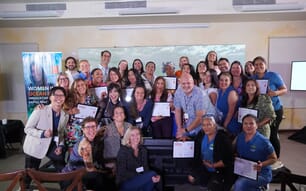The new test, developed at the Queen’s Institute for Agri-Food and Land Use, is said to ensure shellfish are free of toxins before they reach the food chain and is likely to transform the global fishing industry, says the project leader, Professor Chris Elliott, who is the director of the institute.
While the current process for monitoring potentially dangerous toxins in shellfish takes up to two days, the test uses new bio-sensor technology to show results in just 30 minutes and provides a far more reliable result, says Dr Elliott.
The test detects paralytic shellfish poisons, which paralyse anyone who consumes them and kills around 25 percent of people who are poisoned. It works by using unique “detector proteins” to seek out minute amounts of toxins present in mussels, oysters, cockles and scallops.
“Toxins secreted by algae and which concentrate in shellfish are a major hazard to consumers and can bring huge economic losses to the aquaculture industry,” says Dr Elliott.
“While the existence of these toxins has been known for some time, there have been major concerns about the effectiveness of tests used to detect them. There is also growing evidence that climate change is causing many more toxic episodes across the world, resulting in the closure of affected shellfish beds,” he says.
“The test will not only make shellfish safer to eat, but also it will have a significant impact on global aquaculture industries as they struggle to deal with the rising problems of toxins caused by climate change.”
The test is part of a £10 million (NZ$17.795 million) BioCop research project led by the Queen’s School of Biological Sciences and involving 32 international research partners and the European Commission.
“We have also signed a substantial contract with the UK-based company Neogen Europe to commercialise the idea.”
Research at Queen’s will also be aided by a US$500,000 grant from the American Food and Drugs Administration to further develop the test in the United States so it can be conducted in laboratories and on boats as soon as the shellfish are caught. This will help drastically cut the time taken to get the catch from fishing nets to supermarket shelves.
Test Detects Shellfish Toxins
Scientists at Queens University in Belfast, Northern Ireland, have pioneered new technology to test if shellfish are safe to eat.




